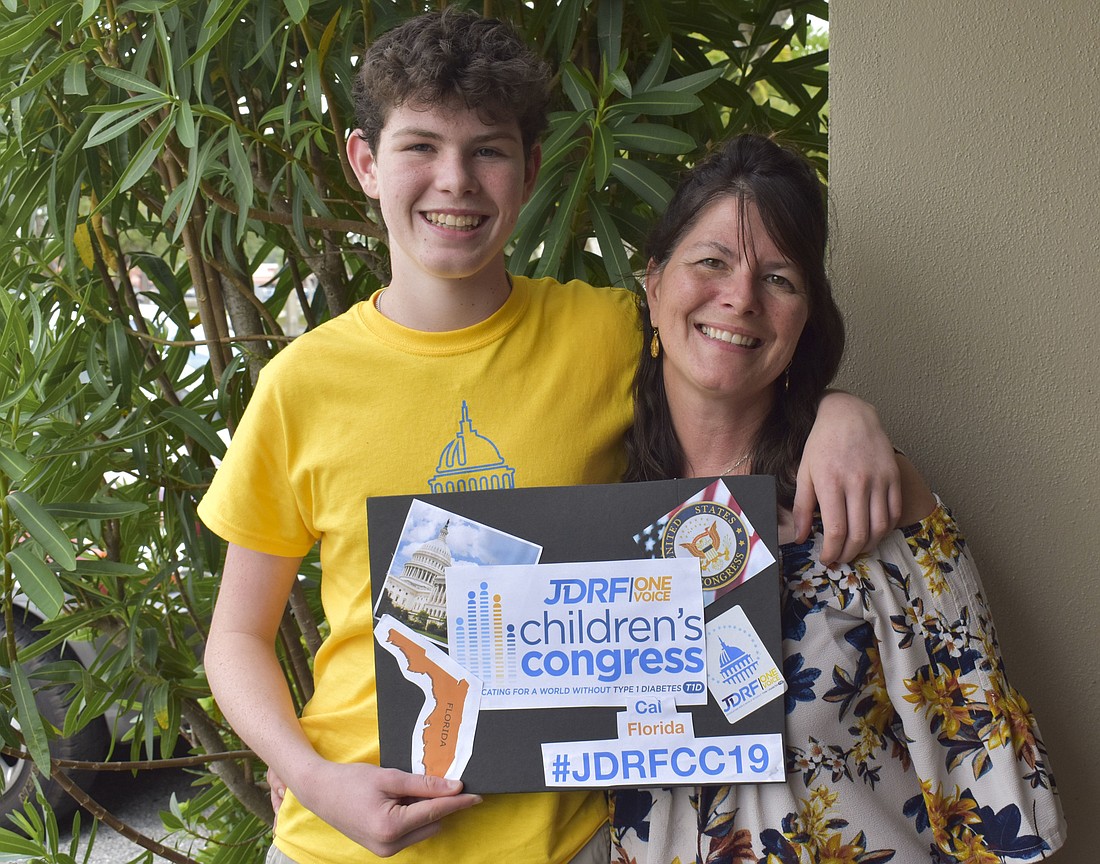- November 23, 2024
-
-
Loading

Loading

Cal Haas was found to have Type 1 diabetes one month after turning 6, but he’s never let it stop him from living like any other kid.
“I do everything a normal kid would do,” Haas said, who explained that his pancreas produces little to no insulin, which helps convert blood sugar from carbohydrates into energy.
He plays basketball with his friends, enjoys history and science as a Pine View School student and goes fishing with his family.
Haas just has to take extra precautions, such as making sure he has his glucose tablets on him in case his blood sugar level drops. But this has become second nature for Haas because he “doesn’t remember life without diabetes.”
Now 14, Haas is making sure his voice — and the voices of other children living with Type 1 diabetes — is heard as a Children’s Congress delegate.
On July 8, Haas, along with 160 children ages 4-17 from across the country, will head to Washington, D.C., to meet with U.S. representatives and senators to ask them to continue to fund the Special Diabetes Program, which gives $150 million to Type 1 diabetes research.
Chosen from more than 1,000 children, Haas is one of 11 Florida delegates to go before Congress and testify about what it’s like to live with the condition.
The group will also meet with representatives from their congressional district one-on-one.
This is all done through the Juvenile Diabetes Research Foundation, which raises money for research to find a cure.
The program is near to Haas’s heart because he and his family began volunteering with the foundation less than a month after his diagnosis.
“[JDRF] contacted us, and Cal wasn’t even out of the hospital,” said Janelle Haas, Cal Haas’ mother. “Within four weeks of his diagnoses, we had our first [JDRF One] Walk team.”
That’s why the trip to Washington, D.C., is so important to Haas.
“The hope is for a cure because we don’t want to have a burden of diabetes anymore,” Haas said. “It’s expensive. It’s painful. It’s not fun.”
Haas wears two sensors to stay on top of his insulin levels. One on his leg is called the infusion site, which pumps his insulin. The other on his back continuously monitors blood sugar levels and relays the readings to his mom’s cellphone.
“It’s a lot of responsibility,” he said. “You have to always make sure you’re on top of everything because if one day you’re like, ‘Oh, I’m not going to deal with it,’ you can’t do that. If I do that, I can end up in the hospital or die. So I always have to be sure to take care of it.”
Although Haas said that his condition has caused some annoyances in his life, he said it has also led him to meet some of his best friends.
Each year, he attends the camp Friends For Life in Orlando, where everyone either has Type 1 diabetes or is related to someone who does. Haas said it’s one of two or three times a year where he knows everyone in the room understands how he’s feeling.
“They know exactly what it’s like to be in my situation,” Haas said. “It’s always good to see a community who always has your back. … Everyone wants [the same] outcome to happen, which is a cure.”